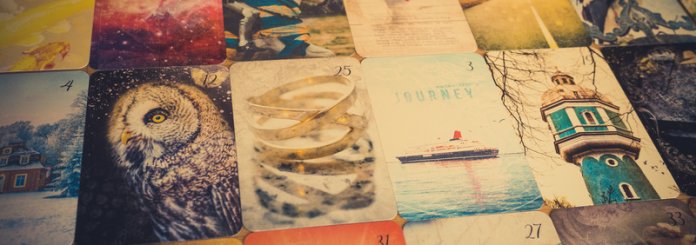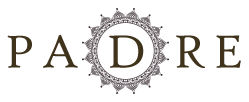Tarot Lenormand features and what makes it special

Tarot Lenormand and Oracle: These are just some of the types of decks that people will often use or associate with divination. When used correctly, these cards can help us identify paths we may wish to take, problems that are snowballing, or connections that are fading.
The problem is that these cards all serve a similar purpose and their similarities can create confusion. We’re going to break down the major and minor differences between Tarot cards and Lenormand cards as we explore the Tarot Lenormand distinctions.
The Similarities to the standard Tarot
Before we consider the Tarot Lenormand differences, let’s take a moment to explore Tarot Lenormand similarities. What do these two decks have in common? As you’re probably already aware, each deck can be used to reveal knowledge relating to your place in the universe.
This is often done via a reading, which involves having a question in mind, shuffling the deck, choosing cards, and then interpreting their meaning.
All of these steps are the same across both deck types. There are differences with them, which we’ll explore in a moment, but the general process is the same. Both decks contain cards that are similar in nature. Each card has a name or function, and this meaning represents an aspect of the reading.
Again, the specifics do differ between the Tarot Lenormand card types, but the general concept is the same.
Get in contact with your Guardian Angel and receive your FREE ANGEL READING, just by filling out this form:
Tarot Lenormand features
Another of the Tarot Lenormand similarities relates to the interpretation process of any reading. Each card has a set meaning, and while this is important to know, it’s just as important to be able to trust your intuition when reading a card’s meaning, especially in relation to any other cards that have been played.
The Differences
Now we’re going to explore the Tarot Lenormand differences. Some of these differences are more major than others, but they all impact why you may choose one deck over the other. We’ll start off by looking at the cards themselves. Then we’ll examine the images that appear on the cards of each deck.
After we’ve explored the different styles of spreads that people tend to use with each deck, we’ll end by considering whether you’d be better off with a Tarot deck or a Lenormand deck.
How many Lenormand cards are there?
We’ll start off with Tarot cards. You’re probably pretty familiar with a standard Tarot deck: it contains 78 cards in total. These are divided up into the Major Arcana cards (22 cards) and the Minor Arcana cards (56 cards).
While each of the Major Arcana cards is unique from the next, the Minor Arcana cards can be divided up into four suits: Cups, Swords, Pentacles, and Wands.
Each suit has 14 cards with 10 number cards (1-10) and four court cards (Jack, Knight, Queen, and King). The Major cards all offer a unique meaning, whereas each suit of the Minor cards is connected to one another by a theme e.g. the cups suit is associated with emotions and feelings.
Lenormand cards, on the other hand, are a bit different. A Lenormand Tarot deck contains 36 cards. In some decks, the cards are divided up into suits, as each card contains a smaller version of a standard playing card e.g. 10 of clubs or 8 of spades.
Regardless, Lenormand cards are typically more similar to the Major Arcana cards from a standard Tarot deck, in that they all carry a unique meaning and generally aren’t divided up into suits. The cards themselves are just the start of the Tarot Lenormand differences though, so let’s consider the images.
The Images
When it comes to cards used for divination purposes, the images are the focus. Each card has a meaning attached to it, but the images themselves are the important part. This is where one of the most important Tarot Lenormand differences become apparent.
Tarot cards, particularly modern versions such as the Rider-Waite deck or the Thoth deck, are rife with symbolism and hidden meaning. Any given card will have a central focus but surrounding any main character or event will be further details that can offer deeper meaning in connection to other cards played.
For example, you may see fields in the background that are full of crops waiting to be harvested. Another example would be children playing together happily at the side of the card. These smaller details are often ignored but they play an important role in any Tarot reading.
When it comes to the Lenormand deck meaning, the images are a lot more straightforward. Nothing is added beyond the primary image. There are no hidden meanings or secret details. The purpose of each image is simply to make it identifiable.
So, when you see the ship or the snake, you know it’s the ship card or the snake card. Nothing else is necessary! These differences become more apparent when we consider the spread styles available for each deck.
The Spreads
We already mentioned that the general process of carrying out reading is the same when using either deck. However, some areas of this process do differ. Both readings will require a card spread.
This reflects the number of cards and the type of reading that is taking place. Due to the differences between the decks, in relation to the cards and their images, the spreads are also different.
With a Tarot reading, the most common spread type is a 3-card spread. Each card represents a tense or state e.g. past, present, and future or mind, body, and soul.
Other examples could be a 5-card spread, a 12-month spread, a quarterly spread, or a 4-week spread. Tarot cards can offer more specific information and so while the interpretation is often more complicated, it tends to give a more direct answer.
In comparison, the Lenormand deck meaning is too simple to offer the same depth of answer as a Tarot reading. Instead, we have to view reading as being similar to telling a story.
The most common spread types are called strings and involve using 2, 3, 5, or 7 cards. You also get squares which include 9 cards, and even a 36-card spread.

